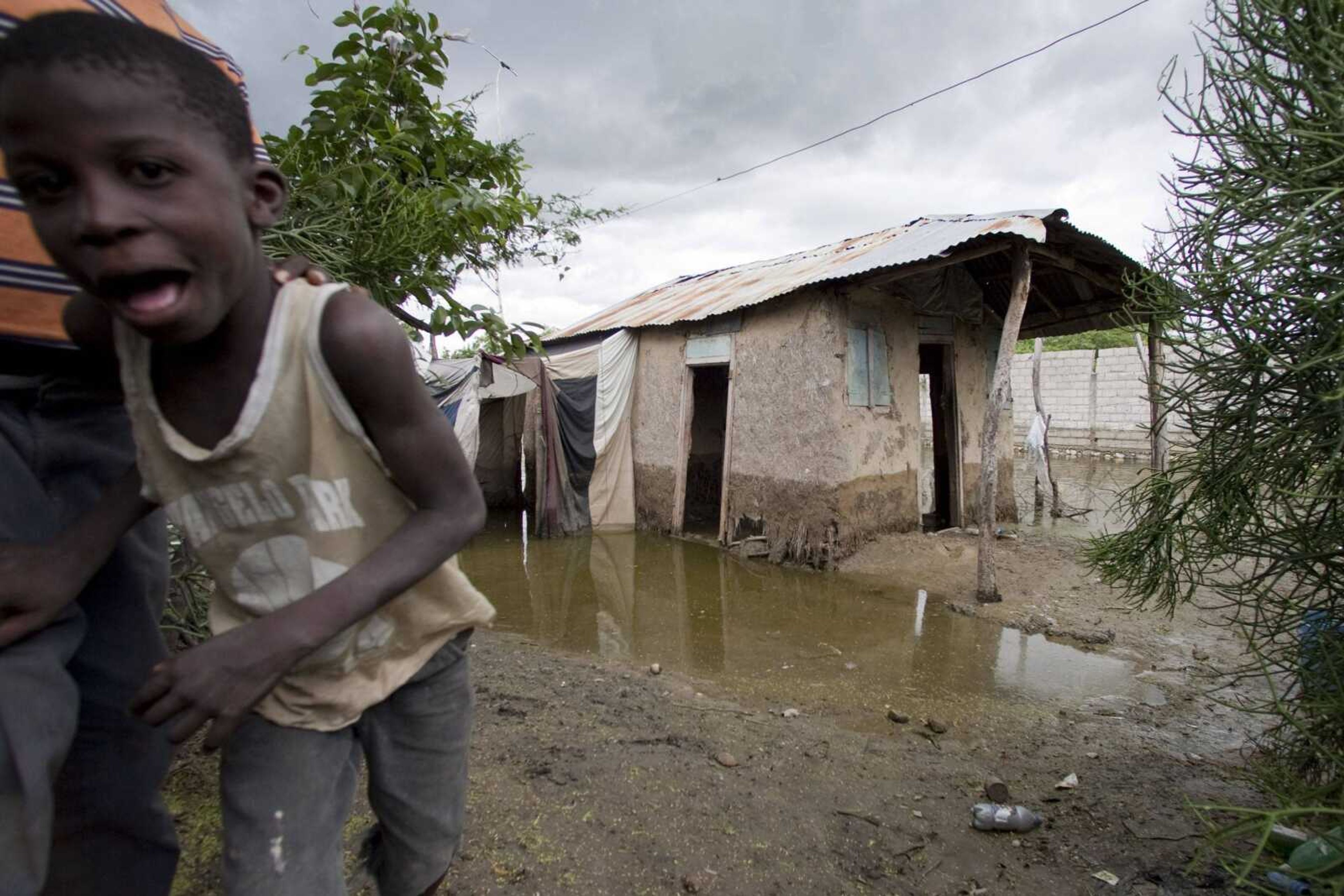Floods threaten rural Haiti after Emily breaks apart
L'ESTERE, Haiti -- Rivers rose to dangerous levels in Haiti's rural center Thursday even as Tropical Storm Emily broke apart and became a wet low pressure system after dumping rains over Haiti and the southwestern corner of the Dominican Republic...
L'ESTERE, Haiti -- Rivers rose to dangerous levels in Haiti's rural center Thursday even as Tropical Storm Emily broke apart and became a wet low pressure system after dumping rains over Haiti and the southwestern corner of the Dominican Republic.
At least 50 homes were in danger of being flooded in the rice-farming village of L'Estere in Haiti's Artibonite Valley, where a government worker tried to persuade people to leave their small cinderblock and wooden homes. Nearby, a dozen homes were already inundated with chocolate-brown water.
The government worker asking people to leave, Max Obed Desir, said most refused because they wanted to protect their belongings in the remote region, where heavy rain already had been falling for weeks and the arrival of Emily worsened the situation.
"The hardest part of my job is telling people and telling people and telling people they have to leave, and they don't leave," Desir said as he took photos of the endangered houses and tallied the numbers in a log book.
Civil protection authorities could not estimate the danger posed by flooding in the countryside Thursday night, but Desir said other villages faced the same threat. The Artibonite is particularly prone to flooding because the surrounding mountains have been almost completely deforested by people clearing trees for agriculture and to make charcoal.
The U.S. National Hurricane Center said all hurricane watches and warnings had been canceled but heavy rains were continuing to fall over the island of Hispaniola, which is shared by Haiti and the Dominican Republic.
Emily dropped more than 5 inches around the southwestern Dominican city of Barahona, prompting the government to order the evacuation of more than 5,000 people.
With about 600,000 Haitians still living in flimsy tents and shanties because of the January 2010 earthquake, strong winds whipped through palm trees in Haiti's capital while heavier rains fell farther north, damaging homes and a cholera treatment center, said Marie Alta Jean-Baptiste, the country's civil defense director.
No deaths had been reported.
In the capital, which has most of those left homeless by the earthquake, government officials evacuated a few families from a camp for quake victims to a school, said Jean-Joseph Edgard, an administrator in Haiti's Civil Protection Department. There were also voluntary evacuations in the Delmas section of Port-au-Prince.
More than 1,000 people were evacuated from their homes in the far western town of Jeremie but were expected to return to their homes Thursday night, Jean-Baptiste said.
About a hundred people were staying in temporary shelters in the southern beach town of Jacmel and 25 inmates from a jail in the coastal town of Mirogoane were taken to a nearby police station, said Emmanuelle Schneider, a spokeswoman for the U.N. Office for the Coordination for Humanitarian Affairs.
Schneider said the U.N. mission also sent heavy equipment to the Central Plateau to help repair a road cut by flooding. A team of sanitation specialists also traveled to the area to help stem the flow of the flood cholera treatment center.
In L'Estere, Associated Press journalists accompanied Desir as he knocked on doors to record the damage and warn people to leave their homes.
Most refused, but Elene Dorceli joined several dozen people who opted to relocate, moving to a cluster of camping tents a few blocks away.
The 50-year-old mother of five had returned to her home made out of sticks and dirt Wednesday night after a family funeral took her away for five days. Despite the government's calls and text messages alerting Haitians to the threat of Emily, Dorceli hadn't heard of the approaching storm or threat of flooding until she came back.
"I was in shock," Dorceli said as she stood in a soup of mud at the entrance to her home, a crude dwelling the size of a one-car garage. The river outside her door was rushing by and she didn't want to take any chances.
She tugged at Desir's white polo shirt. She wanted to go.
"You can't put pressure on the locals," Desir said. "You just have to talk to them. Either they listen or they don't."
Twenty minutes later, heavy rain began to fall.
Connect with the Southeast Missourian Newsroom:
For corrections to this story or other insights for the editor, click here. To submit a letter to the editor, click here. To learn about the Southeast Missourian’s AI Policy, click here.









